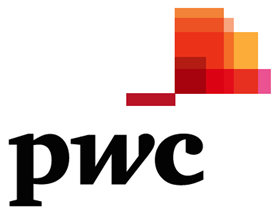Over the long term, economic growth is the fundamental driver of the growth in corporate revenues and earnings, which in turn drive returns from equities and other assets. The SDGs aim to create a viable model for the future in which all economic growth is achieved without compromising our environment or placing unfair burdens on societies. Embracing the relationship with society, the environment and government creates a new strategic lens through which to view and judge business success.
Economic development often means using more resources and increasing carbon emissions: from 2000 to 2013 most countries increased both their GDP and their ecological footprints. However, there were 48 countries that managed to develop sustainably, increasing their GDP whilst also decreasing their ecological footprints.
The Business and Sustainable Development Commission (BSDC) – a collection of 36 leaders from business, finance, civil society, labour and international organisations exploring why and how business can contribute to delivering the SDGs – have outlined how incorporating the SDGs into core growth strategies, value chain operations and policy positions opens up new opportunities and big efficiency gains for companies, whilst also enhancing reputations.
The BSDC estimates that this could unlock economic opportunities worth at least US$12 trillion a year by 2030 (more than 10% of global GDP) and generate up to 380 million jobs (covering more than 10% of the forecast labour force in 2030), mostly in developing countries. But they estimate that the total economic prize from implementing the SDGs could be two to three times larger still, assuming that the benefits are captured across the whole economy and accompanied by much higher labour and resource productivity.
Further studies show great potential from focusing on social outcomes, such as gender equality. The McKinsey Global Institute estimate that achieving gender parity would add between US$12 trillion and US$28 trillion to global growth by 2025. Research from the Copenhagen Consensus identified a top set of 19 of the 169 SDG targets that will deliver more than US$15 of good for every US$1 spent benefitting people, planet and the economy.
“The Sustainable Development Goals and the 2030 Agenda are relevant to all businesses, all nations and all people. They are the foundation for us to be able to keep going in a healthy way. If all businesses understood how the SDGs truly affects them, there would be no businesses not working on them. It is important for investors to know, demand information and take into consideration the SDGs in their decision-making process.”
Sonia Favaretto, Managing Director of Media Relations, Sustainability, Communications and Social Investment, B3
The SDGs are shared institutionalised goals, coming at a time when the alignment between the financial economy and real economy has never been more vital for future development. The company contribution to the SDGs will either mitigate adverse impacts on development, or positively contribute to sustainable growth, meaning that most companies’ strategies will be aligned to these goals. Responsible investment not considering the SDGs will follow a logic that is not mainstream, so will necessarily remain niche.”
Erin Levey, Head of Research and Investor Strategy, eRevalue
The biggest opportunities from the BSDC research have been identified across four economic systems: food and agriculture; cities; energy and materials; health and wellbeing. In food and agriculture, for instance, a system in line with the SDGs would deliver nutritious, affordable food for a growing world population, generate higher incomes (particularly for the world’s 1.5 billion small-holder farmers), and help restore vital ecosystems such as the world’s oceans. This has the potential to create new economic value of more than US$2 trillion by 2030 and would be much more resilient to climate risk.
Conservative analysis shows potential for an additional US$8 trillion of value creation across the wider economy in areas such as information communication technologies, education and consumer goods, if companies embed the SDGs in their strategies. Factoring in the cost of externalities34 such as greenhouse gas emissions could increase the overall value of opportunities by almost another 40%.
| FOOD AND AGRICULTURE | ENERGY AND MATERIALS |
|---|---|
|
Food waste in the value chain (US$155 billion to US$405 billion a year)
Forest ecosystem services (US$140 billion to US$365 billion a year)
Low income food markets (US$155 billion to US$265 billion)
|
Circular models in the automotive sector (US$475 billion to US$810 billion)
Expansion of renewables (US$165 billion to US$605 billion)
Circular models for the appliances and machinery sectors (US$305 billion to US$525 billion)
|
| CITIES | HEALTH AND WELL-BEING |
|
Affordable housing (US$650 billion to US$1,080 billion)
Energy efficiency in buildings (US$555 billion to US$770 billion)
|
Risk pooling (US$350 billion to US$500 billion)
Remote patient monitoring (US$300 billion to US$440 billion)
Telehealth (US$130 billion to US$320 billion)
|
“The SDGs have fundamentally changed the game. They are the closest thing the world has to a strategy”.
Dr Jake Reynolds, Cambridge Institute for Sustainability Leadership
“The SDGs offer the greatest economic opportunity of a lifetime”.
Paul Polman, CEO, Unilever
“The SDGs provide a very useful framework for how investors can contribute to the core global challenges through their investments and for the standardisation of impact investments and impact measurement.”
Marcel Jeucken, Managing Director, Responsible Investment, PGGM
Produced in collaboration with PwC
Downloads
The SDG investment case
PDF, Size 2.83 mbEl enfoque de inversion en los ODS
PDF, Size 1.66 mb
The SDG investment case
- 1
- 2
- 3
- 4
- 5Currently reading
Macro opportunities: Driving growth
- 6
- 7














